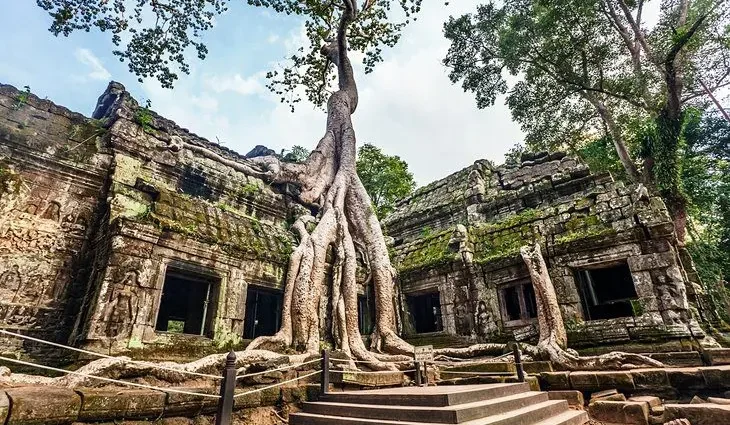Contents
- 1. Explore Angkor Wat (Angkor Archaeological Park)
- 2. Visit Angkor National Museum
- 3. Watch a Performance of Phare: Cambodian Circus Show
- 4. Enjoy a Zipline Tour on the Flight of the Gibbon
- 5. Spot Butterflies at Banteay Srey Butterfly Centre
- 6. Day Trip to Koh Ker
- 7. Take a Boat Tour of the Tonle Sap Villages
- 8. Cycle around the Countryside
- 9. Shop at Siem Reap’s Markets
- 10. Visit the Landmine Museum
- 11. Learn about Traditional Crafts at Les Chantiers Ecoles
- Map of Attractions & Things to Do in Siem Reap
- Where to Stay in Siem Reap for Sightseeing
Siem Reap is thriving. This town is Cambodia’s number one place to visit, thanks to the grand temples of the Angkorian period sitting right on its doorstep.
Everyone who arrives is here to see Angkor Wat, the country’s greatest tourist attraction, but the town’s burgeoning popularity with travelers has led to a whole host of other activities and things to do opening up, providing some downtime from temple-hopping.
Siem Reap itself isn’t the prettiest town, but it has a lively café and restaurant scene that is beginning to compete with Phnom Penh for cosmopolitan flair, and the central city area is home to some of the best souvenir shopping you’ll find in the country, with both market stalls for great bargains and a whole host of plush boutiques for special gifts.
Plan your time and sightseeing itinerary in town with our list of the best things to do in Siem Reap.
1. Explore Angkor Wat (Angkor Archaeological Park)
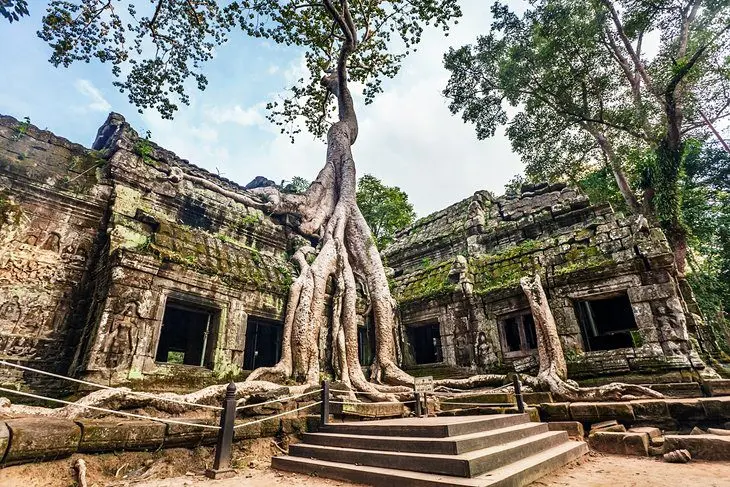
Siem Reap’s energetic and forever expanding tourist industry is all down to the fact that one of the world’s most incredible tourist attractions sits next door.
The vast ancient city that sprawls across Angkor Archaeological Park (more commonly called after its major temple complex, Angkor Wat, by visitors) was built by a succession of kings between the 9th and 15th centuries, contains hundreds of temples, and is so vast that even after multiple visits, you’ll still feel like you’ve only scratched the surface.
During the medieval age, this was the world’s largest city, though only the temples remain today.
The main temple complex within the site is Angkor Wat itself, with its stunning bas-reliefs carved with scenes from traditional Hindu epics. In particular, make sure to check out the Churning of the Ocean Milk bas-relief on the east gallery.
After Angkor Wat, head to the sprawling 10-square-kilometer Angkor Thom complex, where you’ll find one of the most photogenic temples in the site.
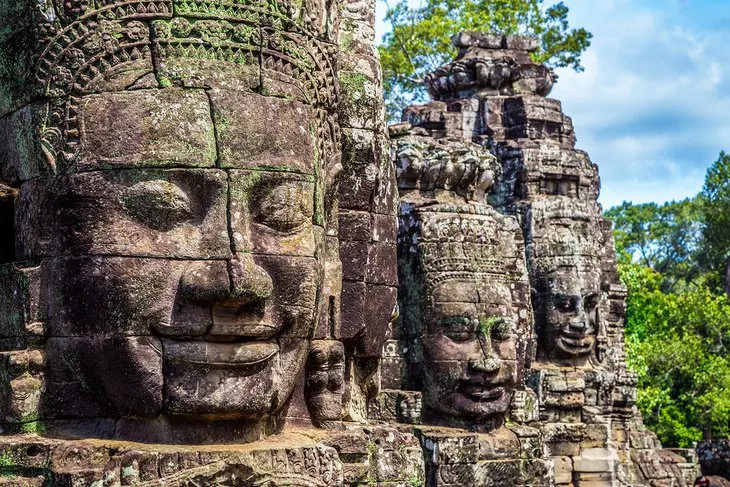
The Bayon Temple is famed for its 216 stone faces of Avalokiteśvara carved into the temple’s 54 towers, built by the king Jayavarman VII, but don’t miss the intricate bas-reliefs running around the temple walls that depict life here in the city and various battle scenes.
If you’ve only got one day up your sleeve to hit the temples, the next destination on your tick list should be Ta Prohm, easily one of the most photogenic sights here due to its half-tumbled buildings entwined with tree roots.
With more than a day to discover the legacy of the Angkorian kings, there is a vast amount of other temples to see.
The best way of organizing your temple time is to hire a tuk-tuk driver for a couple of days to whizz you in and out of town and to break up the temple gazing for a day or two in between.
If you have three days available, make sure you don’t miss Preah Khan for its towering columns, and definitely make time for the farther flung temple of Banteay Srei.
To avoid the crowds and see the temples in all their glory, a Sunrise Small-Group Tour of Angkor Wat from Siem Reap might be your best choice.
This tour will pick you up from your hotel around 4am, so you can arrive at Angkor Wat in time to see the sun rising over the ancient ruins. Your English-speaking guide will then take you to see other imposing ruins, including the Angkor Thom South Gate and the Ta Prohm Temple, famous for the massive tree roots growing out of its walls.
2. Visit Angkor National Museum
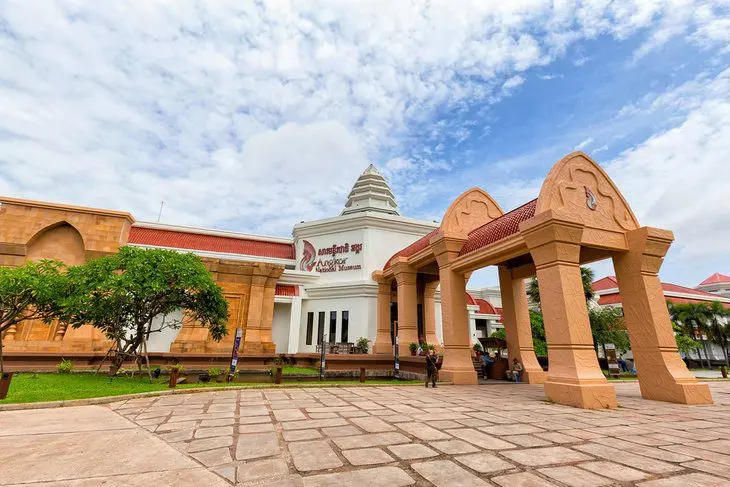
An excellent accompaniment to a visit to Angkor Wat, this modern museum does a good job of explaining and unpicking the history of the Angkorian period, with audio-visual presentations, excellent information boards, and a well set out collection of Khmer treasures from the site’s temples, along with pieces from other Cambodian archaeological sites.
A visit here is one of the best ways to get your head around the various eras of the Angkorian period and the succession of kings that attempted to outbid each other on their temple building schemes.
Must-sees include the entry gallery, which contains 1,000 images of the Buddha over the ages; Gallery A that explains how the Khmer Empire was founded; and Gallery C, which is devoted to the story of the four greatest kings of the Angkorian era: Jayavarman II, Yasovarman I, Suryavarman II, and Jayavarman VII.
Address: Charles de Gaulle Boulevard
Official site: www.angkornationalmuseum.com
3. Watch a Performance of Phare: Cambodian Circus Show
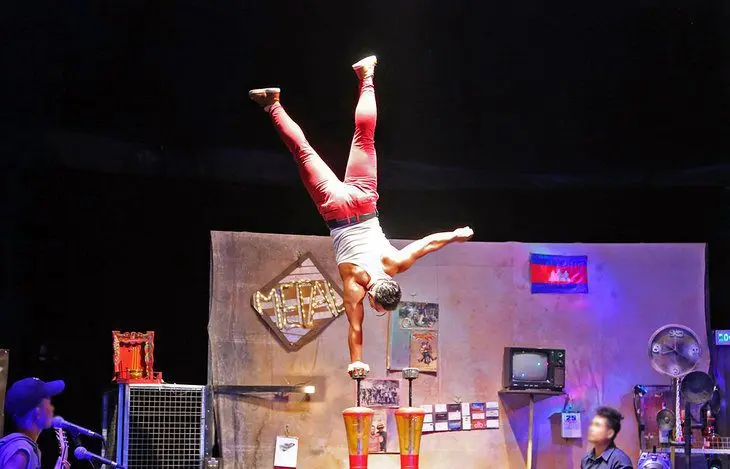
Cambodia’s lauded circus, Phare Ponleu Selpak, is a dazzling spectacle combining acrobatics, music, dance, circus slapstick, and a variety of other performance arts, and it’s also for a good cause. This is a contemporary circus, similar in style to Canada’s famed Cirque du Soleil, with a story weaved through the performance, combining drama and comedy all into one show.
Phare is a performance show with a difference. Phare uses the profits generated from tickets and sales during performances to support social and professional arts training programs.
All the performers of Phare are graduates from the Phare Ponleu Selpak Performing Arts School in Battambang that trains disadvantaged youth in a range of arts.
This colorful and lively spectacle merges more traditional circus skills with a thoroughly contemporary twist that also packs in elements of traditional Khmer cultural dance and music. It is a unique night out that manages to enchant both adults and children. Performances are held under a big-top nightly.
When you buy a Phare: The Cambodian Circus Show in Siem Reap ticket, you get the option to choose preferred seating, which comes with a free beverage and gift (a refillable sports water bottle).
4. Enjoy a Zipline Tour on the Flight of the Gibbon
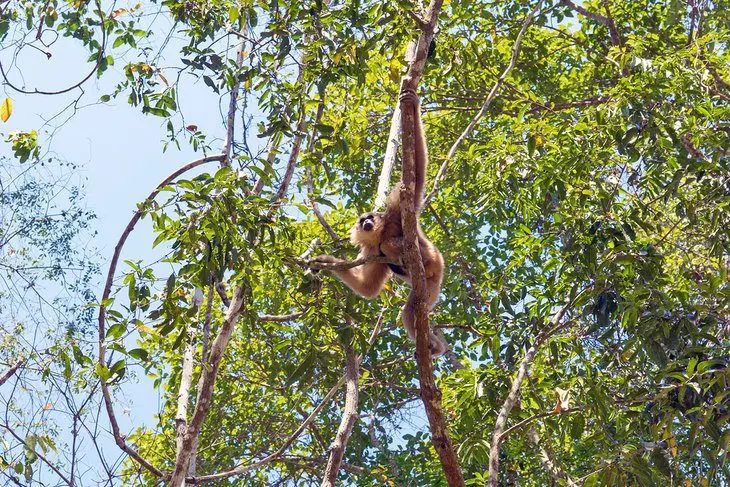
Inside the Angkor Park area, the Flight of the Gibbon zipline tour (which also runs two zipline tours in Thailand) offers 10 ziplines crossing over a jungle canopy on a two-hour course.
Along the way are four hanging sky-bridges, a 50-meter abseil that will please those seeking an adrenaline rush, and 21 platform stations. There are also plenty of opportunities to learn more about the jungle environment and flora and fauna, including edible plants, medicinal plants, wild orchids, and a tarantula house.
There’s also a chance that you may spot gibbons in the surrounding jungle, as a couple have been released back into the wild here.
Pickup from hotels in Siem Reap and lunch is included in the cost of the tour.
5. Spot Butterflies at Banteay Srey Butterfly Centre
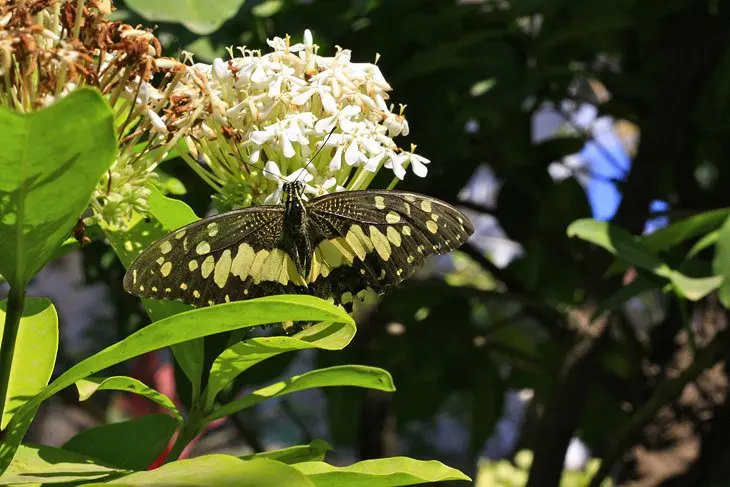
This is Southeast Asia’s largest butterfly enclosure, home to thousands of endemic butterfly species that fly freely around a huge, enclosed tropical garden brimming with lush foliage and a variety of tropical flowers.
A visit here provides an interesting natural diversion from all the temple-hopping, particularly for families with young budding botanists in tow.
As well as simply admiring the spectacular kaleidoscope of colors from the amount of different butterflies within the garden, you can also see the entire life cycle of a butterfly from the pupae stage.
About 25 kilometers north of Siem Reap, the center is very near to the Cambodia Landmine Museum and combining the two for a morning or afternoon trip is a good idea if you’re suffering from temple fatigue.
Official site: www.angkorbutterfly.com
6. Day Trip to Koh Ker

After spending time exploring the vast temple complexes of Angkor Archaeological Site, head 116 kilometers northeast of town to the remote temples of Koh Ker, surrounded by lush forest.
Built in the 10th century, Koh Ker was very briefly capital of the Angkor Kingdom under Jayavarman IV’s reign. The most spectacular temple built by Jayavarman IV here is the 40-meter-high tiered pyramid temple of Prasat Thom, where you can climb the steep staircases for views from the top.
After climbing Prasat Thom, head to the southern end of the cleared site to see the beautiful temple of Prasat Bram, with its towers half swallowed by and entwined with tree roots.
7. Take a Boat Tour of the Tonle Sap Villages
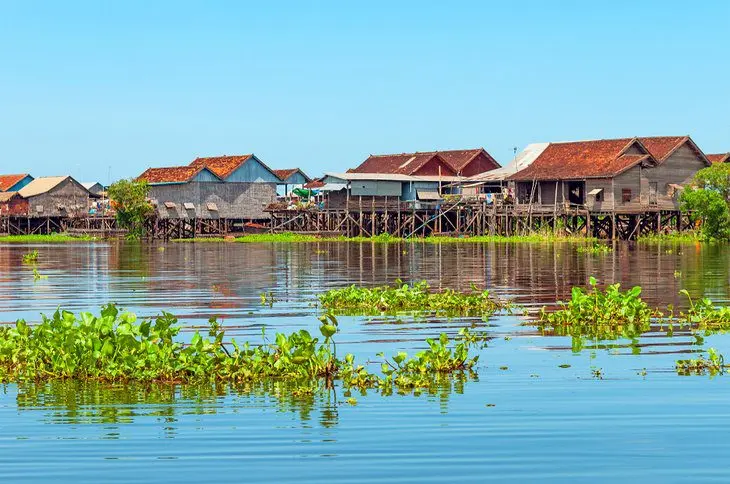
For a snapshot of life on Tonle Sap, Southeast Asia’s largest lake, there are a scatter of villages that are within easy reach of Siem Reap.
The villages are usually explored by boat, either on a tour organized in Siem Reap or by organizing one independently with boat operators once you arrive at the lakefront.
One of the best Tonle Sap destinations to visit is Kompong Khleang, 55 kilometers southeast from Siem Reap, which has a community-based boat tour company, as well as individual boat operators.
Kompong Khleang is a large lakeside town with a mix of high stilted houses (so that the buildings don’t flood as the lake’s water levels rise during wet season) and other communities where the buildings sit on buoyed platforms on the lake surface.
Another interesting village is Kompong Phluk, 32 kilometers southeast of Siem Reap, which is also known for its lakefront stilt-house architecture. Some of the stilts are over six meters tall here.
8. Cycle around the Countryside
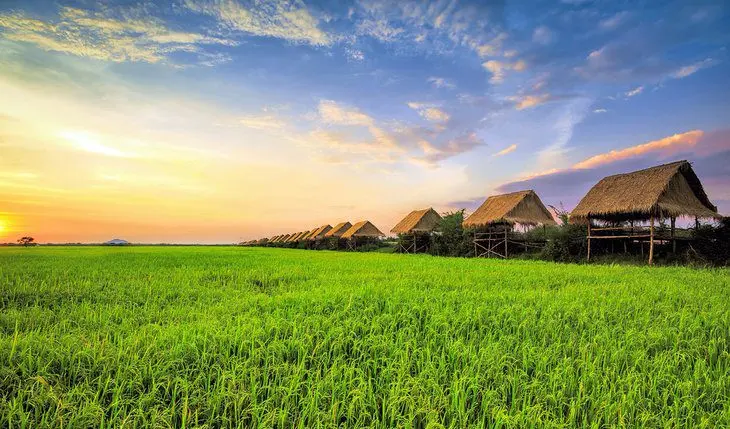
With so many spectacular temples to see nearby, many visitors miss exploring what else the countryside around Siem Reap offers to visitors.
For those who do want to break up the temple viewing though, there are plentiful operators offering cycle tours, tuk-tuk tours, quad-bike (ATV) tours, and motorbike tours that head away from the historic attractions and instead concentrate on Cambodian rural life and scenery.
Half-day cycle tours offer plenty of countryside vistas of lush, green rice fields and farming plots studded with swaying palm trees and, depending on the tour, stop off at small pagodas, little villages, and local produce markets, as well as local farms.
9. Shop at Siem Reap’s Markets
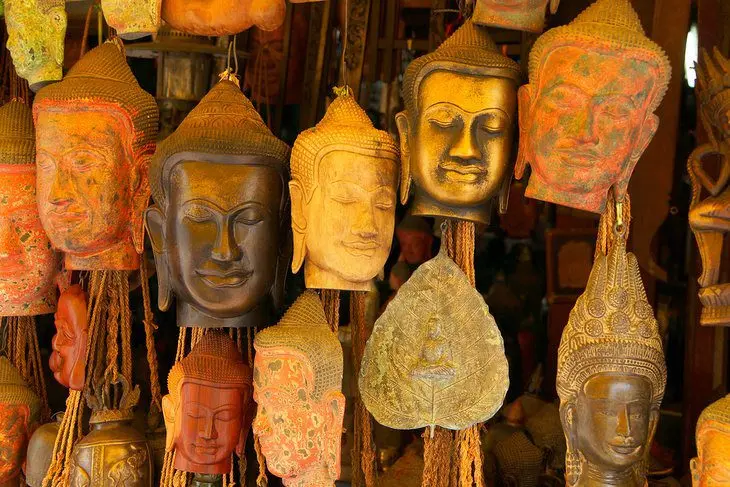
Siem Reap has plenty of boutique shopping but don’t forget to check out the markets as well.
Siem Reap’s Old Market (Psar Chaa) is one of the most central market areas and offers everything from fresh produce and cheap clothing to wood and stone carvings. A lot of the craftwork here isn’t high quality but its still fun to browse.
The Angkor Night Market is another market not to miss. It usually operates from late afternoon to midnight. There is a huge amount of local craftwork on sale here, from local silk scarves to silver jewelry.
Don’t forget haggling is the normal way to purchase items in the markets, so you need to put your bargaining hat on.
10. Visit the Landmine Museum
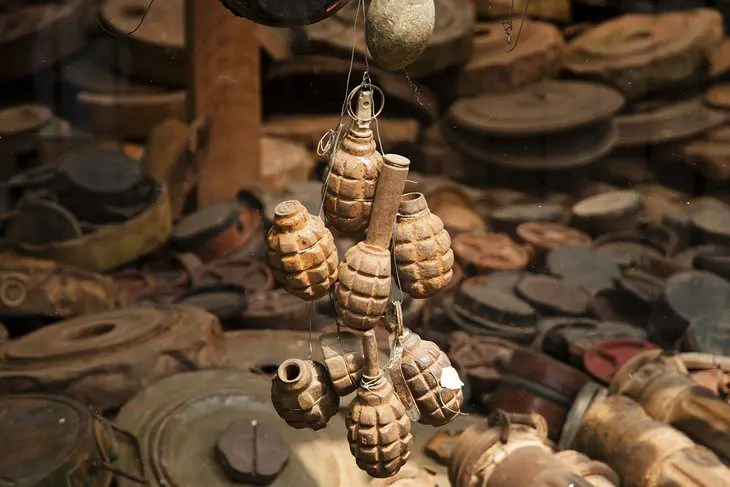
The long years of war during the late 20th century continue to scar Cambodia with the horrifying toll of landmines. There are thought to be around five million landmines still sitting buried in the countryside left by Khmer Rouge forces, Vietnamese forces, and the Cambodian government.
Cambodians are still paying the price today with 15 people on average injured by landmines each month.
The Landmine Museum, 25 kilometers north of Siem Reap, does an excellent and highly informative job of highlighting the ongoing scourge of landmines in Cambodia and the work being done to de-mine the country.
It was set up by local man Aki Ra, who has greatly contributed to demining efforts.
Official site: www.cambodialandminemuseum.org
11. Learn about Traditional Crafts at Les Chantiers Ecoles
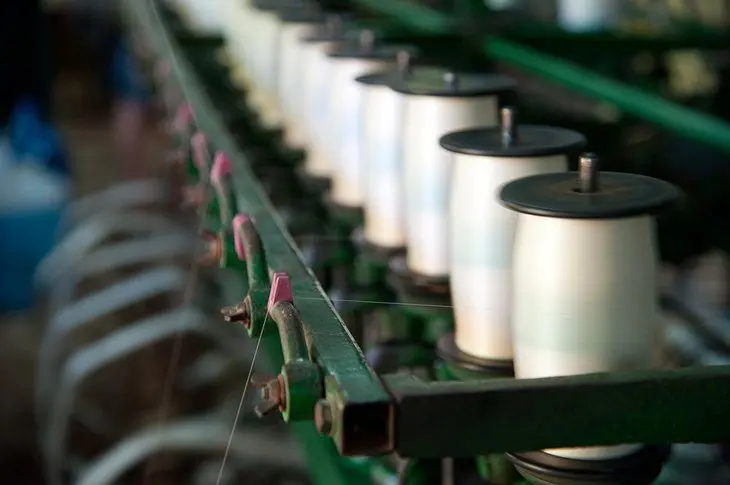
This school teaches traditional Khmer crafts of stone-carving, wood lacquer-work, and silk painting to disadvantaged local youths. It is part of a movement to help revive the many traditional crafts that were lost due to the years the country spent under Khmer Rouge rule.
As well as being home to a beautiful shop (Artisans d’Angkor), where you can pick up stunning souvenirs of statues and lovely local silks for all your friends and family back home, you can also take a tour of the workshops and learn about the revival of Cambodia’s crafts.
There are also free tours available of their silk farm, 16 kilometers out of Siem Reap town, where you can learn about the process of making silks.
Official site: www.artisansdangkor.com
Map of Attractions & Things to Do in Siem Reap
Where to Stay in Siem Reap for Sightseeing
We recommend these great-value hotels in Siem Reap near the restaurants, shops, and attractions in town:
- Shintana Saya Residence : This luxury boutique hotel provides free tuk-tuk rides to town and fresh coconut on arrival. The grounds feature tropical gardens and a beautiful pool,
- Golden Temple Retreat : Offering mid-range pricing, a lovely central pool, evocative decor, traditional dance show, and complimentary massage, this property is an excellent choice.
- Advaya Residence : Located near the entertainment district, this affordable boutique hotel has an outdoor pool and pleasant rooms with rain showers.
- The Rose Apple Boutique Bed and Breakfast : This budget-friendly B&B is known for its wonderful hosts, saltwater pool, and fresh-made breakfast.










